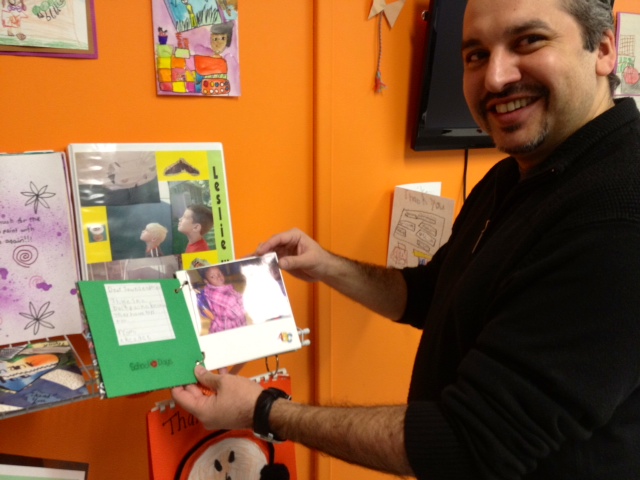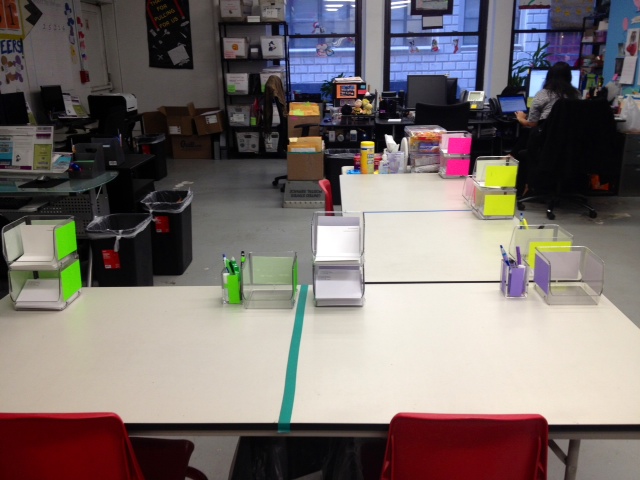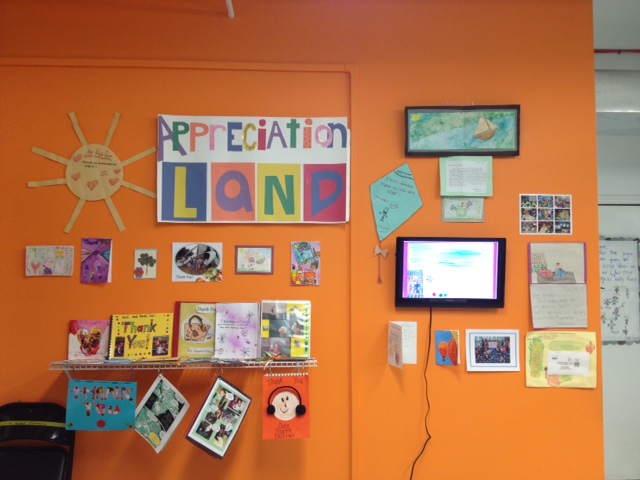DonorsChoose.org, an organization that connects individual donors and businesses with schools in need of supplies, began its lean journey in 2007 when its leadership team decided to use lean to scale the organization and provide services to every public school in America. Since then, the DonorsChoose.org team has maintained a 30% year over year productivity improvement rate, streamlined processes and dramatically improved customer service. With 55 staff members and $50 million in annual revenue, DonorsChoose.org funds 100,000+ classroom projects a year. We talked with COO César Bocanegra about how his team uses lean thinking every day and the value of lean thinking for nonprofits.
LEI: What is the purpose of DonorsChoose.org?
 César Bocanegra: To close the inequity gap that exists today in education. Whether it has to do with technology, literacy, arts and music, we’re trying to bridge that gap and help schools get the tools and resources they need.
César Bocanegra: To close the inequity gap that exists today in education. Whether it has to do with technology, literacy, arts and music, we’re trying to bridge that gap and help schools get the tools and resources they need.
If you came through the public education system, you know what it’s like. If you look at how first world countries are doing in terms of public education, we’re towards the bottom of the list. We want to get big enough that we can help drive public policy. We have a data scientist who looks at all of our data and comes up with these great nuggets we can provide to public officials to say “Hey, look what’s happening.”
LEI: What is the work of DonorsChoose.org? What does the work look like?
 |
| COO Cesar Bocanegra shares thank you notes from students |
CB: We have an operations team, human capital team, finance team, marketing team, technology team, and a partnerships and business development team. There’s a lot of cross-collaboration. For any complex project, at least one person from each team is involved.
When it comes to customer-relations, we ask the people on the frontlines who are talking to teachers and donors to help out with our partnerships and marketing efforts. Those team members know what our customers want. We’re also data nerds. Most of our decisions are driven by data.
Our tech team is focused on making the website easier to use. They work closely with operations. The ops team does a lot of usability testing for the website. They’ll go and find people who have never heard of DonorsChoose.org and ask them to use our website to get different pain points and quirks out of the system. While they do this, the tech team is on the site watching all of this happen. So we make changes in real-time. We’re really proud of the fact that the people with the skills to make website changes can actually see the pain points of the user and then make changes. There’s no middle man.
LEI: How would you describe the culture of the organization?
CB: We’re a very busy organization, but very laid back. Even though we’ve been around for 13 years, we behave like a startup. Everybody has ownership and accountability of their work. We make decisions at the gemba level. At the end of the day, our staff members know what’s really going on in the trenches. We let people make the tactical decisions they need to make and ask them to help us understand what’s going on with our teachers, donors, and corporate partners, so that as an executive team, we can make strategic decisions we need to make. Our core values are relentlessness, user-focus (for both customers and staff), flexibility, ingenuity (so we can be innovative with limited resources), transparency, and teamwork.
Teamwork is one of the biggest things I’ve learned at DonorsChoose.org. Everybody is passionate about the mission of the organization. No one says “that’s not my job.” If there’s something that needs to get done, people volunteer to do it. People are passionate and team-oriented. Anyone here could go to the for-profit world and probably make twice as much as what they make here, but they’re here because they believe in the work and the mission of DonorsChoose.org.
LEI: How do you practice lean?
 |
| Visual management at DonorsChoose.org |
CB: Our CFO always says “let’s take the friction out of the process.” When I came here in 2007, I did a lot of training on what the vision of operations would be like. I wanted that vision to start at the operations level and permeate throughout the rest of the organization. We’d make paper airplanes and I’d show the difference between mass production and lean production, batch production and one-piece flow.
I remember working with a high school intern in the donor appreciation area. He was putting together thank you packages. He was the leader of the interns, he had a lot of clout, and he was adamant that batch production was more efficient (and produced higher quality) than one piece flow. I made him a bet. I said, “You do your batch production for 10 minutes and then try one piece flow for 10 minutes. Be honest and we’ll compare.” I told him if he could prove his method was better, he could do things his way. Within 10 minutes he realized that one-piece flow was more efficient and changed to one-piece flow. It was fun. Everybody gathered around and could easily see the difference.
I learned lean theory during my masters program at MIT. When I began applying lean out in the world, I was a fairly strict manager. Everything was standardized and streamlined. I’d tell people, “This is how you’re supposed to do it and there’s no deviation.” We used to have a lot of rubrics and kanbans and signs telling people exactly how to do things. What I eventually realized is that everybody has their own way of doing something. You can’t impose one method, especially when you work with so many volunteers. Having a person feel motivated and happy goes a lot further than full standardization of everything. At first I thought I’m willing to take a hit on quality in exchange for volunteer morale and happiness. What I didn’t realize is that when employees are happy, quality improves (even when there are some deviations to the process) because people care about what they’re doing and are talking to each other about the work.
Theory is good in books. But in practice, we’re all human, we all behave differently, our brains are wired differently. So now when we implement lean tools, I adapt them and let others adapt them to some degree too. I have almost zero involvement in the donor appreciation area now, which makes me sad and happy. I love making improvements, but I love that I can focus on other things.
Another way we’re practicing lean: we have a robust performance report card for each vendor that shows whether they delivered the materials to the wrong person, the item was backordered or out of stock, the customer service was there or not, etc. We have vendors come to us and say they get more data about how they’re performing from DonorsChoose.org than from their own people. We provide vendors with charts of our annual spending and let them know how we want to partner with them. We treat them as partners and try to help them out so it’s a worthwhile partnership for them.
LEI: Is there a lean principle that particularly resonates with you?
CB: Yes, the 5 whys! I’ve always found it fascinating how people don’t take the time to find out the root cause of a problem and fix it once and for all. People are so much quicker to treat the symptom and not the actual root cause. I try to ingrain the 5 whys in all of our staff members.
I can give the example of a donor thank you package that we mailed to a donor and got returned to us. It was marked undeliverable. The first thing you hear is that the package is undeliverable because the wrong address was on the package. Why? Well, because the donor put in the wrong mailing address. Why? Because our system allows users to do this. Why? You start digging deeper and deeper and you find out there are systems to match addresses with the U.S. Postal Service so you can guarantee that whatever address the user enters, it’s the right one. So that’s one thing we’re working on to minimize undeliverable packages. We have now selected a vendor (smartystreets.com) to provide us with address verification at no cost to us!
Of course, there’s always Kaizen. I take Kaizen for granted because our culture at DonorsChoose.org is one of continuous improvement. We know that no matter how well something works, there’s always a better way and we’re constantly submitting new ideas to our tech team to enhance and improve the way we do business.
LEI: What’s the opportunity for lean in nonprofits?
CB: There’s a perception about nonprofits that they aren’t rigorous when it comes to data collection, that they’re all mission and no rigor, that people who run nonprofits are more passionate than data-driven. But you see lean being practiced in the more forward-looking nonprofits. Everything from looking at the seven wastes of production to defects and zero inventory, you can apply lean principles to any service or nonprofit organization. Even in customer service—we get about 200 emails per day from teachers and donors—why leave emails sitting there for days? Answer them as soon as they come in, make sure you have zero inventory so that it doesn’t accumulate and create more problems.
As for transparency, in the manufacturing world if you do value-stream mapping, you have boards that show how people are doing. This motivates people, it gives people a sense of transparency. The more that nonprofits can learn from each other about how to use lean principles, the better. We want to show that it is possible to be a self-sustaining nonprofit. You never want to go out there begging for money to pay for operations-related expenses. We’re self-sustaining now. Just two years ago, that wasn’t the case.
We’re transparent with customers, too. 40% of our donations are from citizens who donate as little as $1. Our average donation on the site is about $50, but even if you donate $1, you get the feedback you’d get if you donated $1 million to another nonprofit. Our donors get photographs, a teacher letter, communication with the teacher, and a report that shows exactly where their money is spent. If a donor donates $50 or more, they also get hand-written, personalized thank you letters from the students.
LEI: What’s the challenge for DonorsChoose.org now, the business problem you’re trying solve?
 |
| “Donor Appreciation Land” |
CB: We have a BHAG, a “big hairy audacious goal,” to be able to fundraise $100 million from 1 million people all helping 100% of high-need schools within one calendar year. We’re halfway there. If we continue growing at 25-30% each year, we should reach that goal within 3-4 years. We want to continue focusing on the U.S. public education system. Teachers spend over a $1 billion out of their own pocket each year, so if you look at the impact we’re making ($50 million per year), that’s pocket change (5%), that’s nothing compared to the impact we could be doing to alleviate the $1 billion teachers are spending.
The process or strategy problem we’re trying to solve has to do with where our revenue comes from. 60% is from our corporate partners and the other 40% is from what we call our citizen philanthropists. We want that to be 20/80. We only want to be dependent on 20% of our revenue from corporations, funders, and partners. We really want to drive a culture change and give people who care about the public education system in the U.S a way to contribute. One of our board members, Stephen Colbert, gives us great shout-outs all the time. Our work is to get the word out there. So we encourage folks to check out donorschoose.org and see all of the exciting work we’re doing.
Related links, workshops, and articles:




